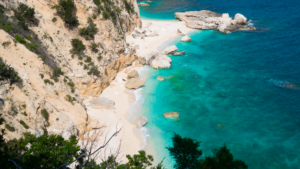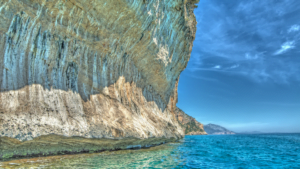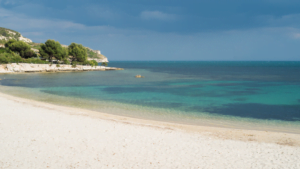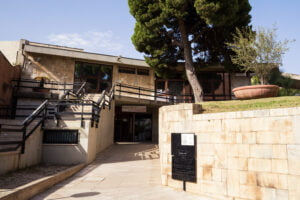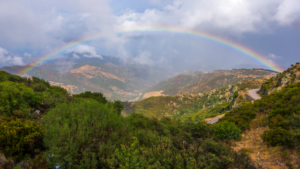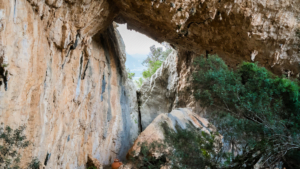In the heart of Sardinia lie the mysterious Giants’ Graves, burial monuments that date back to the Nuragic era, around the 3rd millennium BC. These megalithic structures, set against breathtaking landscapes, seem almost to whisper the stories of ancient peoples who once inhabited these fertile lands.
Map of the Giants’ Graves
Here is a map of the Giants’ Graves present in Sardinia. It’s possible to zoom in to see the name of each individual grave.
A Brief History of the Giants’ Graves
Legend has it that these were the final resting places of giants who once walked the earth, a narrative that adds a veil of mystery and allure to these places already steeped in history and culture. But beyond the legends, these graves are tangible testimonies of an advanced and mysterious civilization, which knew how to combine art, religion, and astronomy into stone monuments that defy time.
The Giants’ Graves are not just architectural wonders but true witnesses of a bygone era, tangible symbols of a culture that deeply influenced the history of Sardinia.
Their historical importance is undeniable, representing not only burial sites but also centers of worship and rituals, where the community gathered to celebrate life and death in an endless cycle. Their unique structure, evoking cosmic and natural symbols, speaks of a society that saw the cosmos and nature as sources of inspiration and guidance.
The Most Beautiful Giants’ Graves to Visit
Sardinia, a land of ancient mysteries and breathtaking landscapes, jealously guards the traces of a civilization that managed to combine art, religion, and nature into stone monuments that defy time. In every corner of the island, you can discover the Giants’ Graves, megalithic structures that tell stories of a distant time.
S’Ena e Thomes, Dorgali
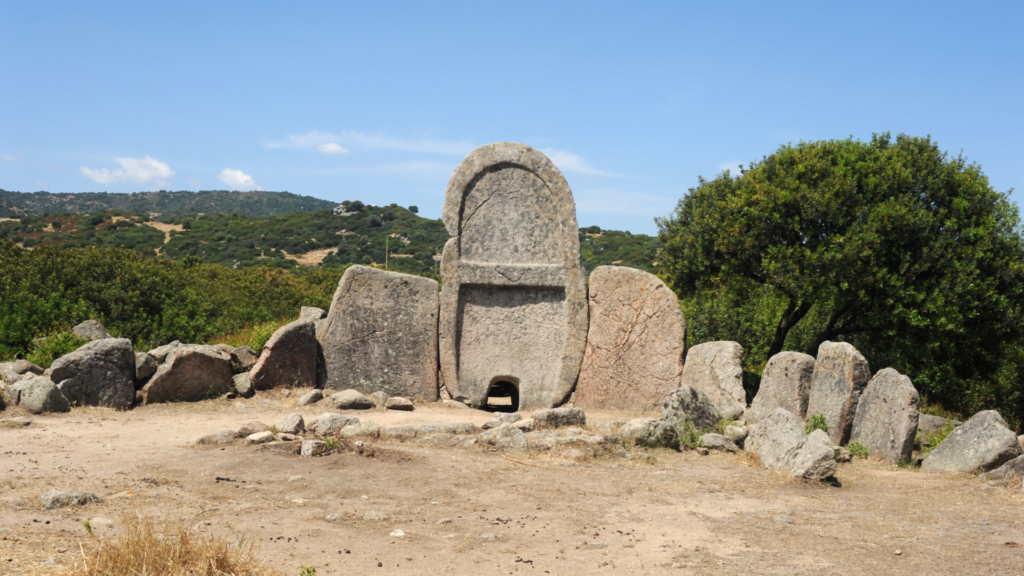

Pascaredda, Calangianus
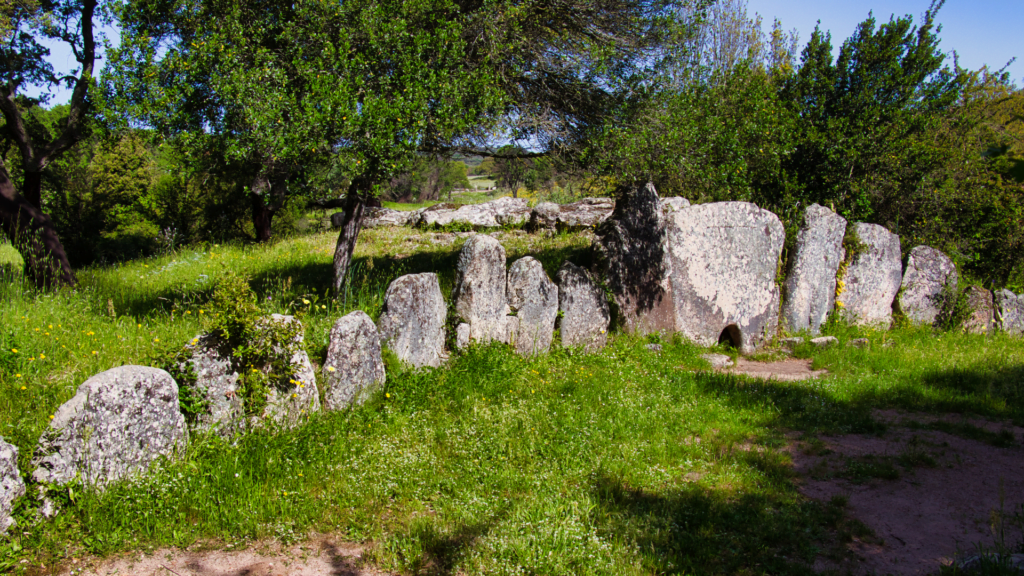

Madau, Fonni
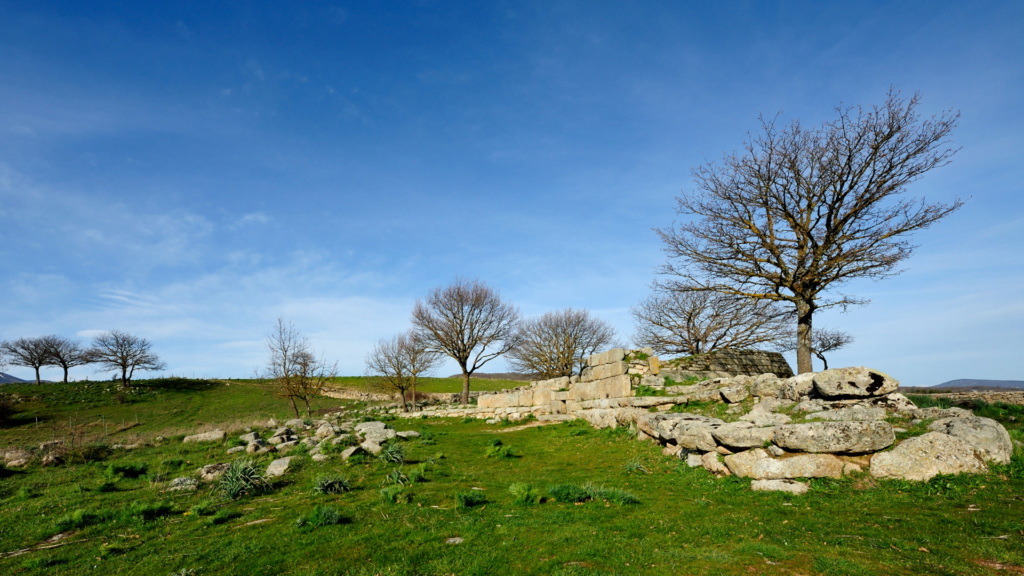

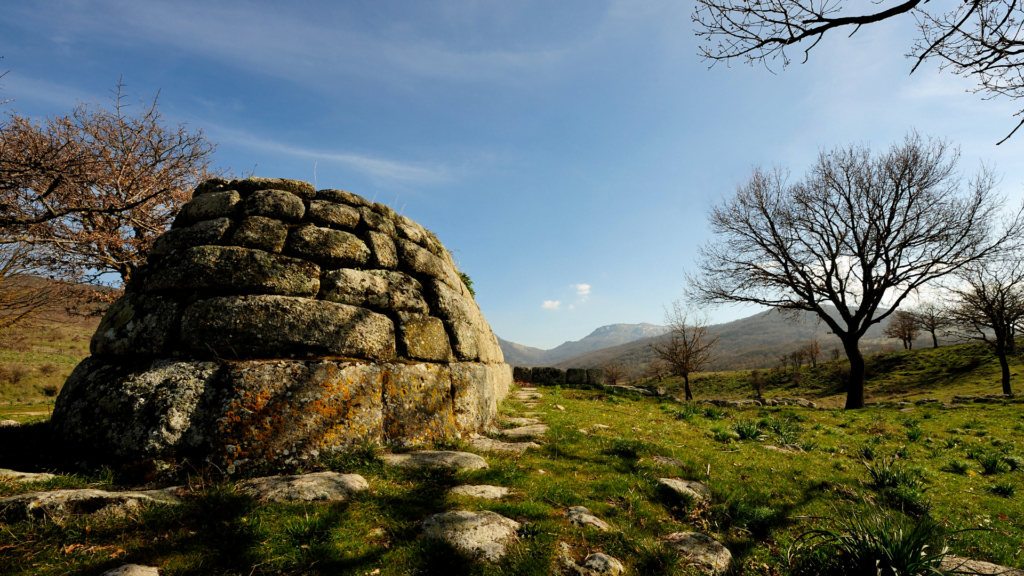

Aidu-Corruoe, Cossoine
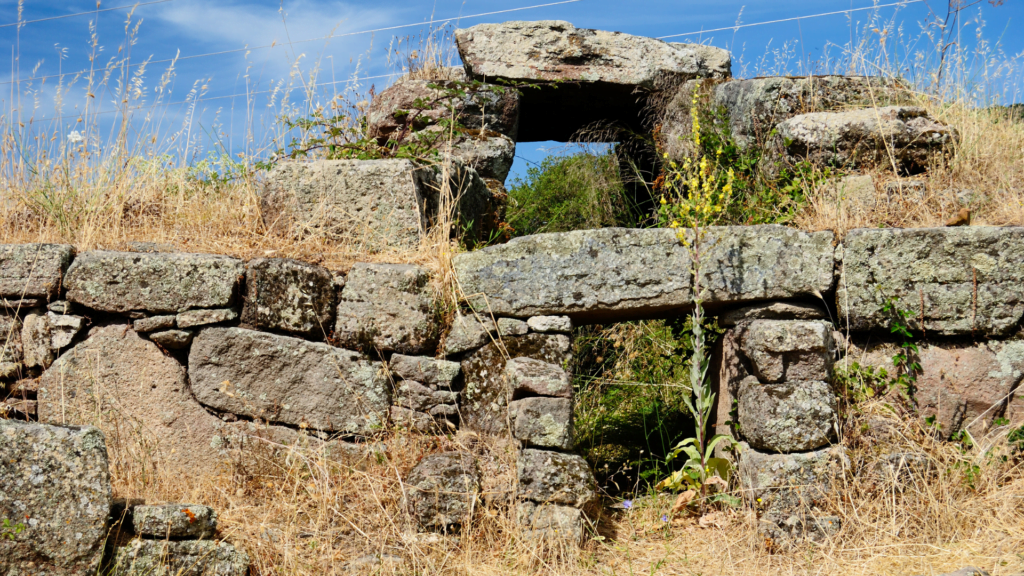

Guide to the locations of the most fascinating giants’ graves:
Giants’ Graves in Different Areas of Sardinia
- Barbagia In the heart of Barbagia, a region that holds the deepest roots of Sardinia, you can discover about twenty giants’ graves, including S’Omo ‘e Nannis and Sa Ucca ‘e Is Canis, monuments that seem to whisper the stories of the ancient peoples who once inhabited these lands.
- Campidano In Campidano, a region that encompasses the true essence of Sardinia, lies the grave of Sa Domu ‘e s’Orku, a monument that fascinates with its size and the mysteries it guards. Located in the area of Is Concias-San Pietro (territory of Quartucciu), this tomb offers a unique view of the Nuragic civilization.
- Gerrei The Gerrei region, with its pristine landscapes, hosts several giants’ graves, including those of Bruncu Bullai, Pala Perdixi, and Su Zureddu. Here, among the silent hills, you can discover the secrets of a civilization that created monuments of extraordinary beauty and complexity.
- Marmilla In the territory of Marmilla, you’ll find the grave of Sa Domu ‘e S’Orku in Siddi, one of the most imposing funerary monuments of the Nuragic age. Not far from here, in Lunamatrona, the prehistoric complex hosts a giants’ grave called Su Cuaddu de Nixias, a place that invites reflection and discovery.
- Baronia Despite the limited availability of officially accessible sites in the Baronia region, you can visit the tomb of S’Ena Tunda in the territory of Lòculi, a place where time seems to have stopped, allowing visitors to immerse themselves in an atmosphere of peace and contemplation.
- Ogliastra Ogliastra, a region that jealously guards its traditions, hosts several graves of great archaeological interest, including that of Osono in Triei, considered one of the most important in Sardinia. In this region, every stone tells a story, offering visitors a unique view of an ancient and mysterious world.
- Sarcidano In Sarcidano, a region that has preserved traces of a distant past, you can discover several giants’ graves, including that of Aiodda in Nurallao, a site that has aroused great interest among archaeologists for its unique menhirs and the stories it tells.
- Sarrabus In the territory of Sarrabus, you can discover sites of great archaeological interest, including the megalithic complex of Piscina Rei dating back to 5000 BC, a place where time seems to have stopped, allowing visitors to immerse themselves in an atmosphere of peace and contemplation.
- Sulcis-Iglesiente In the Sulcis-Iglesiente region, you can visit several well-preserved graves, including those in the territories of Gonnesa, Santadi, and Domusnovas, monuments that testify to the greatness and complexity of the Nuragic civilization.
History and Origins
Nuragic Period
The Nuragic period, a crucial phase in the history of Sardinia, spans approximately from the 18th to the 2nd century BC, an era that witnessed the birth and flourishing of a unique and fascinating civilization. During this time, the island transformed into a kaleidoscope of architectural and artistic innovations, with the creation of imposing structures like the nuraghi and, of course, the Giants’ Graves.
Legends and Myths Associated
Entering the Giants’ Graves is like crossing the threshold into a world where reality blends with myth. The legends surrounding these structures are as numerous as they are fascinating, feeding the collective imagination with tales of giants who once roamed the island, colossal creatures who would have built these graves as their final dwelling.
Architecture and Structure
Detailed Description of the Physical Structure
The Giants’ Graves are megalithic monuments distinguished by their grandeur and the precision with which they were constructed. These structures, which can extend for over thirty meters in length, are characterized by a semicircular façade, called an exedra, made with huge vertical stones that delineate the entrance to the tomb.
Architectural Symbolism
Beyond their practical function, the Giants’ Graves are a true stone book that tells the beliefs and values of the Nuragic civilization. The structure of the tombs, which recalls the figure of a bull, is no accident. The bull, a symbol of strength and fertility, was a deity revered at that time, and its presence in the structure of the tombs is a testament to the deep connection between man and nature that characterized this ancient civilization.
Archaeological Discoveries
Excavations and Findings
Archaeological explorations in the areas where the Giants’ Graves stand have brought to light a wealth of findings that shed light on the funeral practices and traditions of the Nuragic civilization. Excavations have revealed that these tombs were used as places of collective burial, where community members were buried together, in a sort of collective embrace that transcended the barrier of death.
Anthropological Analysis
Anthropological analyses conducted on the human remains found in the tombs offer a deep and intimate look into the life of the ancient Sardinians. These analyses have revealed surprising details about the habits, diets, and diseases of this ancient people, allowing scholars to reconstruct, with some accuracy, their lifestyle and traditions.
Tourism
How to Visit the Sites
Visiting the Giants’ Graves goes beyond mere tourism. These sites, scattered throughout Sardinia, offer a journey back in time, an opportunity to connect with an ancient and mysterious civilization. To visit these sites, you can organize guided tours that provide a detailed overview of the history and significance of these monuments. Visitors can also explore on their own, immersing themselves in the tranquility and natural beauty that surrounds these ancient structures.
Sardinia is well-equipped with tourist infrastructures that facilitate access to these historical sites. Many of them are easily accessible by car and have parking areas. Additionally, near the sites, you can find information points where you get maps and brochures that guide visitors through a discovery and appreciation journey.
Tips for an Optimal Visit
To fully enjoy visiting the Giants’ Graves, it’s advisable to carefully plan the trip. Here are some tips for an optimal visit:
- Time: Preferably, choose to visit the sites during the morning or late afternoon hours to avoid the crowds and enjoy the tranquility of the place.
- Clothing: Wear comfortable clothing and shoes suitable for walking on uneven terrain. Don’t forget to bring a hat and a water bottle during the summer months.
- Respect for the Site: Remember to treat these sites with the respect they deserve, avoiding touching or damaging the monuments.
- Local Guide: Consider hiring a local guide who can provide you with detailed and in-depth information on the history and significance of the tombs.
- Photography: Don’t miss the opportunity to capture the beauty of these sites with your camera, but always respect the site’s rules.



